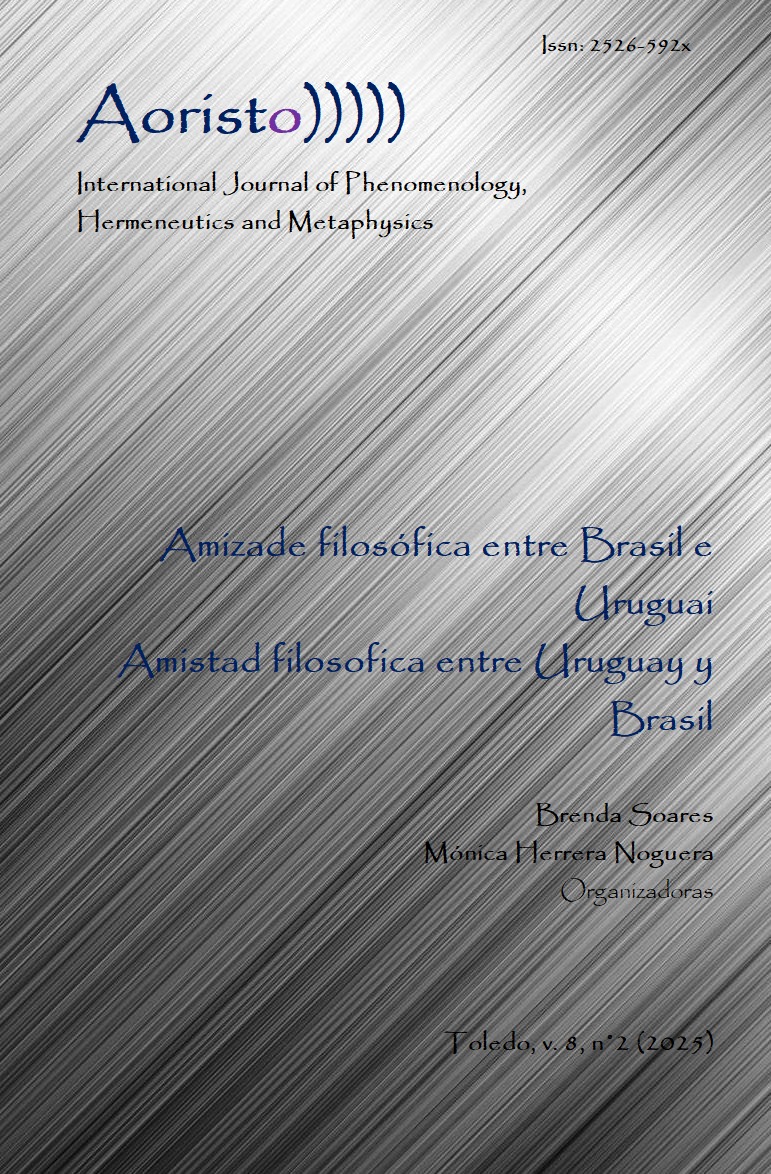Franz Brentano para além de Adolf Trendelenburg
sobre a unidade do ser na filosofia de Aristóteles
DOI:
https://doi.org/10.48075/aoristo.v8i2.35988Palavras-chave:
Categorias, Ser, Brentano, Trendelenburg, AristótelesResumo
A hipótese interpretativa sustentada de modo descritivo nesse trabalho mostrará que, mesmo sob a orientação de Trendelenburg e à luz do seu Zurük zu Kant, Brentano propôs uma radicalização que pode ser caracterizada como um Zurük zu Aristóteles. Tratava-se de uma radicalização pelo fato de que a análise brentaniana não se satisfez com a necessidade garantida pela estrutura formal da linguagem, bem como pela explicitação desta necessidade por meio de uma análise lógica da proposição que relevava apenas a necessidade quantitativa obtida na relação entre a forma da proposição e os predicamentos (categorias). Esta radicalização brentaniana consistiu especificamente na análise exclusiva do sujeito da proposição (hupokeimenon) como forma de explicitar a estrutura onto/lógico-categorial das coisas existentes (tode ti) fora do intelecto (on kath’hauto exo tes dianoias), ou seja, o ser no sentido das categorias tomado na relação entre substância e categorias.
Downloads
Publicado
Como Citar
Edição
Seção
Licença

Este trabalho está licenciado sob uma licença Creative Commons Attribution-NonCommercial-NoDerivatives 4.0 International License.
Copyright Notice
1. I grant the AORISTO – International Journal of Phenomenology, Hermeneutics and Metaphysics the first publication of my article, licensed under Creative Commons Attribution (which allows sharing of work, recognition of authorship and initial publication in this journal).
2. I confirm that my article is not being submitted to another publication and has not been published in its entirely on another journal. I take full responsibility for its originality and I will also claim responsibility for charges from claims by third parties concerning the authorship of the article.
3. I also agree that the manuscript will be submitted according to the Aoristo’s publication rules described above.
License Creative Commons
This work is licensed under a Creative Commons Atribuição-NãoComercial-CompartilhaIgual 4.0 Internacional, which allows you to share, copy, distribute, display, reproduce, in whole or in part, for as long as there is no commercial purpose, and authors and source are cited.


